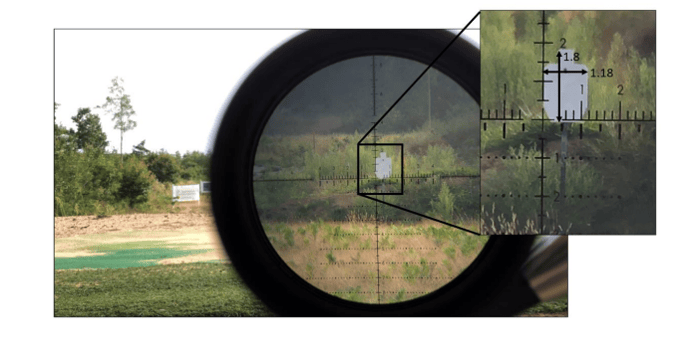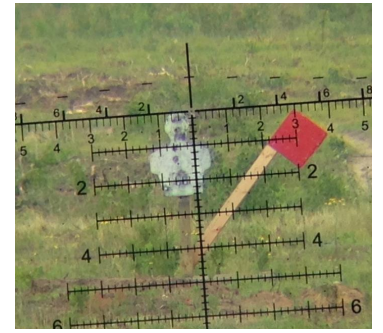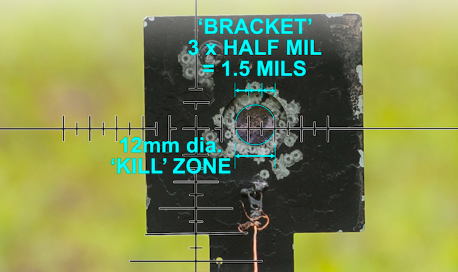A Practical Guide to Milling Without a Rangefinder
Knowing your distance to the target is crucial for knowing how much holdover to give the target.
Easiest way to do this would be to use a range finder and it will give you a accurate measurement within about a yard or so generally.
But what happens if you don't have a laser range finder and you find yourself needing to know the distance.
You use the reticle in your scope.
Using a rifle scope reticle to estimate distance is a technique often referred to as range estimation or milling, especially when using a Mil-Dot or MOA reticle.
This method is a quick way of measuring distance with the equipment you have.
It is an estimation however and not as accurate as a laser rangefinder but generally it is accurate within about 5%.
The calculation required for this is pretty simple, especially if you have an MRAD scope.
Distance (meters)= Target size (cm) x 10 divided by the Mils
Distance (yards) Target size (inches) x 27.78 divided by the Mils
Target size : The height or the width of the target.
Mils : The number of Mils (milliradians) the target spans in your reticle.
27.78 : Conversion constant to get yards when using inches and mils.
For example, lets range a 66% IPSC target.

This target is actually at 269.75m or 295yds.
These targets are 20" by 12" or 30.48cm by 50.cm.
Let's to a estimate in metres first.
Seeing as we know the size of the target, now we need to see the amount of Mils it spans.
This unit spans 1.8mils up and 1.18mils across.
30.48cm (width) x 10 divided by 1.18 mils across = 258.3 metres.
50.8cm (height) x 10 divided by 1.8mil up = 282.2 metres.
You'll notice these two measurements are different, this is because with estimating the mil in the scope will affect the measurement the calculation gives you.
Let try rounding it to 2Mil elevation and see what happens
50.8 x 10 divided by 2mil up = 254 metres.
Now we have another measurement again, this shows how important it is to know the size of the target and how a small variation on the Mil will alter your results.
Easy way to get the best measurement is to add both measurements (height and width) together and divide them to get an average.
258.3m + 282.2m divided by 2 = 270.25 metres.
Lets try measuring yards with the same scope.
12" (width) x 27.78 divided by 1.18mils across = 282.5 yards
20" (height) x 27.78 divided by 1.8mils up = 308.6 yards
With these two measurements being different, let's get an average.
282.5 + 308.6 divided by 2 = 295.55yds.
With an MOA scope, the use is less common for ranging but still possible.
The calculation is
Distance (yards) = Target size (inches) x 95.5 divided by the MOA the target covers in the reticle.
The 95.5 constant comes from how moa works (1 MOA = 1.047 inches at 100yards.)
An example of this would be a 18" across by 24" high target.

With this target, we know the sizes, let's work out the distance.
18" (width) x 95.5 divided by 1.8moa (approx size of target in reticle) = 955yards
24" (height) x 95.5 divided by 2.4moa (approx size of target in reticle) = 955yards
Shortening the method (MRAD ONLY)
Once we get used to doing this math quickly, we can shortern it to,
Distance (metres) = Target size (Millimetres) divided by Mils.
For example, the first target, 508mm (height) divided by 1.8mils = 282.2 metres.
This method is popular in Field Target and Hunter Field Target competitions where speed is of the essence.

With this example, it would be 12mm (width or height) divided by 1.5mils.
This target is 8m away.
Always remember to range at the correct magnification in Second Focal Plane scopes as the subtensions will only be correct at a certain magnification.
Practice estimating the target size accurately, errors here will affect your range estimation significantly.
Use of a range card or pre-measured target sizes for common game or silhouette targets to speed up field estimation.
